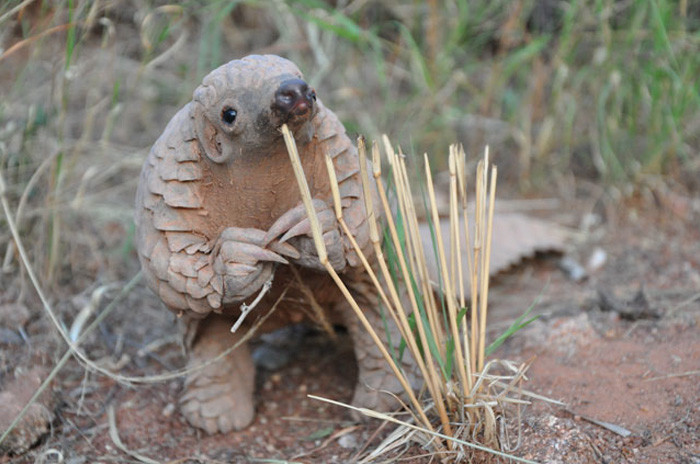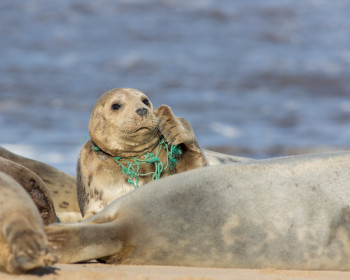Now Is the Time to Revolutionize Our Relationship with Wildlife
Open gallery

The information now in front of us regarding COVID-19 is not revelatory, but it should spark a revolution. Zoonotic diseases, those diseases that transfer from animals to humans, can cause pandemics. They can cause great suffering and loss of life; they can bring the world’s economy to a grinding halt, sacrificing untold livelihoods. COVID-19 has taken this exact toll—and, by most accounts, we’re only in the early stages of the fallout.
How did we get here? The novel coronavirus currently in circulation is a zoonotic disease. The wet market in Wuhan, reportedly the place of COVID-19 transmission from its intermediary wildlife host to humans, was full of live and recently butchered animals, readied for human consumption. At these live animal markets, people and a wide array of wild animals (both live and freshly killed) are in close proximity.
The demand for wild animals for medicine, pets, luxury items, and food fuels a multi-billion dollar industry. This industry is mature and complex, with legal and illegal markets operating in parallel to satisfy the demand of consumers, whose diversity in turn defies attempts to attribute demand to a single class, culture, or region.
Only months prior to the emergence of COVID-19 in humans, an intergovernmental panel of the world’s foremost scientists released the 2019 Global Assessment Report on Biodiversity and Ecosystem Services (“Report”). The Report warns of an acceleration in the loss of species worldwide, the likes of which we have never seen. It predicts that around one million species could go extinct, many within the next few decades, unless we take drastic steps to change the way we interact with animals, plants, and the entire natural world and routinely use them for our own benefit without regard to the consequences. The direct exploitation of wildlife by humans is the second leading driver of this biodiversity crisis, according to the Report (the first driver, habitat degradation, is also human caused).
Our insatiable demand for wildlife catalyzes and sustains the direct exploitation of animals, abets the extinction crisis, and causes the loss of untold numbers of animal and human lives. It is this demand for wildlife that now appears to have sparked a pandemic, leaving unbearable human suffering in its wake. It is clear that we must engage in revolutionary thinking regarding our interaction with wildlife; it is clear that the change we imagine must be transformative. To make this happen, education and outreach are critical.
As both a lawyer practicing in the field of international wildlife law and a law professor, these times mark for me a singular moment. When teaching international wildlife treaties, I encourage students to think about the underlying values, the political tensions, and the compromises that go into consensus-building—these are reflected in how the law regulates human and wildlife interaction. I also teach students to consider the scope and potential of international wildlife treaties. When I teach students to reflect on the potential of international wildlife law, I ask them to think critically and connect dots. COVID-19 connects many dots, and what we do with those connections matters now more than ever.
As I continue to teach and practice law into the coming decades, I hope that this moment—unfolding in the U.N. Year of Biodiversity, no less—reflects a fundamental shift in human and wildlife interaction. I hope that we are able to refer to this moment as a true inflection point—as a critical juncture where the international community came together to blaze new and bold pathways for the benefit of both wildlife and people.
***
Erica Lyman is a Clinical Professor of Law at Lewis & Clark Law School. She joined the International Environmental Law Project (IELP) as a staff attorney and Clinical Professor in 2005. She currently leads the IELP. She has worked extensively with governments, non-governmental organizations, and international institutions on issues of international environmental importance. Erica’s practice area currently focuses on international wildlife trade, whaling, climate change, and other pressing international environmental matters. She teaches International Environmental Law and International Wildlife Law and publishes regularly in the field of international environmental law, with a focus on wildlife. In the fall of 2020, she will be teaching a new, specialized International Wildlife Clinic for CALS in collaboration with Lewis & Clark Law School’s Environmental Law Program which is currently co-ranked as the #1 program in the U.S.
About the Center for Animal Law Studies
The Center for Animal Law Studies (CALS) was founded in 2008 with a mission to educate the next generation of animal law attorneys and advance animal protection through the law. With vision and bold risk-taking, CALS has since developed into a world-renowned animal law epicenter, with the most comprehensive animal law curriculum offered anywhere. In addition, CALS is the only program that offers an advanced legal degree in animal law and three Animal Law Clinics. CALS is a nonprofit organization and is only able to provide these educational opportunities through donations and grants.
More Center for Animal Law Studies Stories
Center for Animal Law Studies is located in Wood Hall on the Law Campus.
MSC: 51
email cals@lclark.edu
voice 503-768-6960
Center for Animal Law Studies
Lewis & Clark Law School
10101 S. Terwilliger Boulevard MSC 51
Portland OR 97219

